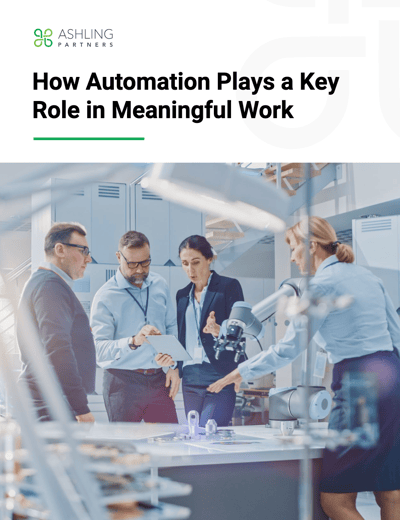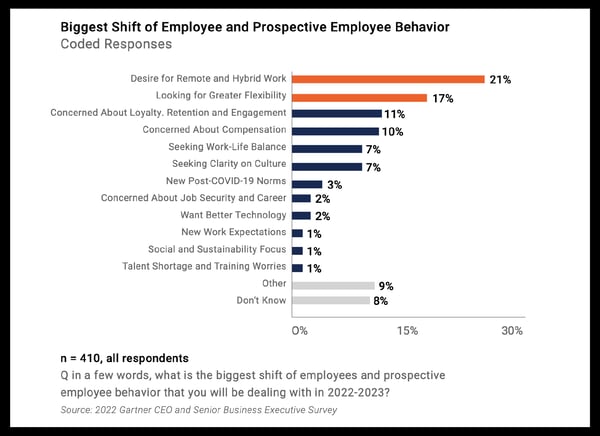Chapter 6
How Automation Plays a Leading Role in Meaningful Work
Automation can contribute to creating a culture of meaningful work. It may seem counterintuitive that automation and the fear-mongering stigma associated with it can lead to meaningful work. However, automation frees people from the drudgery and allows them to play to their strengths as a person. This is associated with a feeling of enhanced purpose and contribution.
An often-shared stat about automation is that half of all activities people do at work have the potential to be automated. Currently, the workforce is at about 10 percent automation, so there is opportunity for automation in every industry and business.
Automation doesn’t magically create meaningful work. It does, however, rid workflows of repetition. It’s also part of the pursuit of digital transformation—using technology, people, and processes to accelerate work, enhance experiences, and deliver outcomes. Digital upskilling is also a critical part of digital transformation initiatives.
Some verticals have been more aggressive adopters of automation than others. For example, finance and insurance, which include lots of documents and repetitive tasks, have prioritized it. Other industries—healthcare, manufacturing, and energy, for example—have lagged behind.
Automation is table stakes for any company in this digital era. The biggest opportunity across all sectors may be in leveraging automation within businesses that were founded before the digital-native era and have legacy systems and processes. These organizations have the most to gain by modernizing operations with meaningful applications of automation.
The introduction of automation shouldn’t just be about stripping down a process. It needs to be part of your roadmap, and you must communicate the benefits to your team. Without these elements, there could be more resistance to change, and the push for automation can have an adverse effect instead of a positive one.
Here are some examples of automation that eliminate the mundane and improve employees’ workflows and everyday lives.
Contact Center Agents Get Relief
By applying RPA to contact centers, agents have cleaner workflows without lots of admin work. As a result, they can resolve customer queries quickly with less searching because they have integrated multiple systems that contain data (e.g., CRMs and ticketing systems). Further, intelligent automation can produce better self-service experiences with AI-powered chatbots. If customers get answers here, they don’t clog up queues, which reduces stress on agents.
IT Departments Use Automation to Drive Operational Efficiency
IT professionals work in constantly changing environments with strict timelines and parameters. They can leverage RPA to streamline many activities, including access requests, help desk requests, patches and upgrades, and more. At the next level, with intelligent automation, they’ll experience more benefits, such as moving workloads from legacy systems, aggregating data, analyzing workloads to optimize them, and processing unstructured data to more formats.
Finance Functions Adopt Automation to Reimagine Workflows
Those working in finance are aware of its document- and task-heavy requirements. These requirements make automation a great fit. It supports invoice and payment processing, contract management, reconciliation, and platform integration.
These are just a few examples of what automation can do to remove antiquated processes in an enterprise. Next, we’ll look at how this contributes to meaningful work in the real world.


